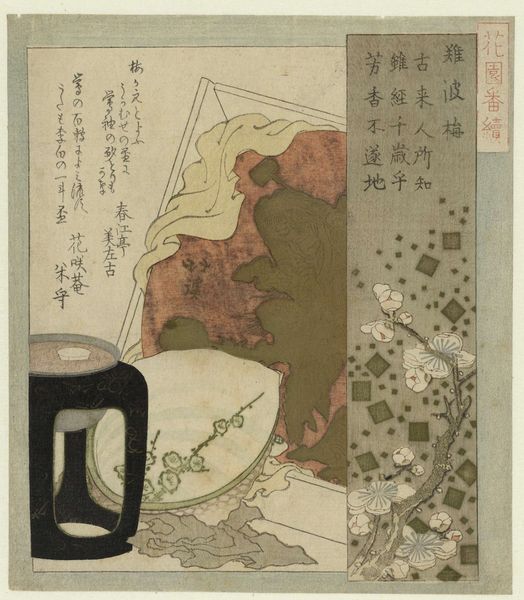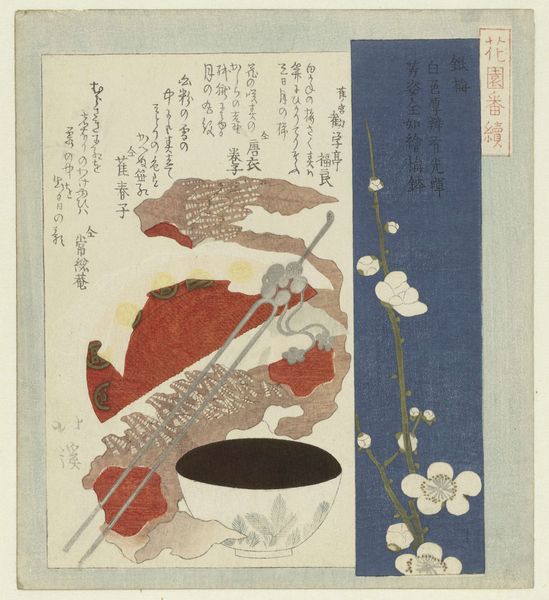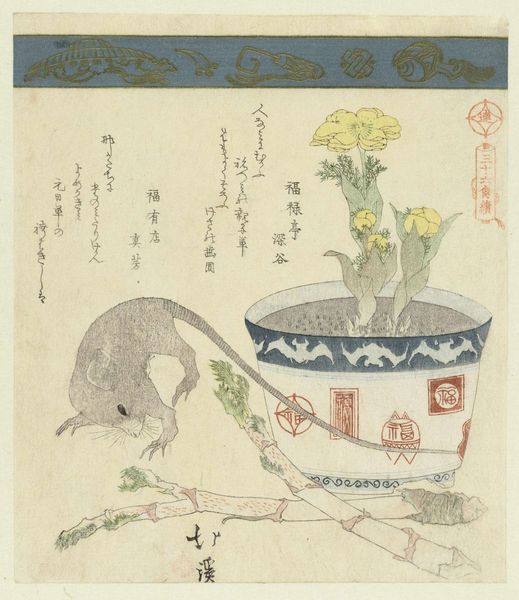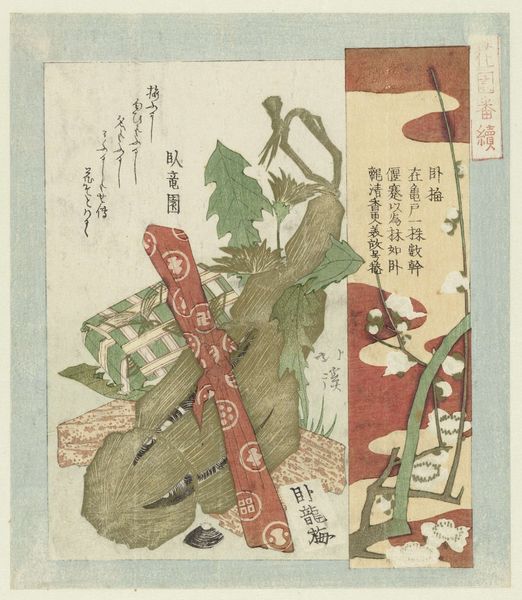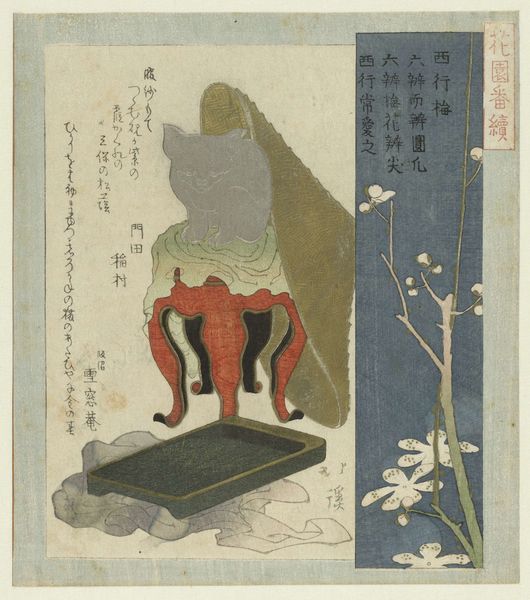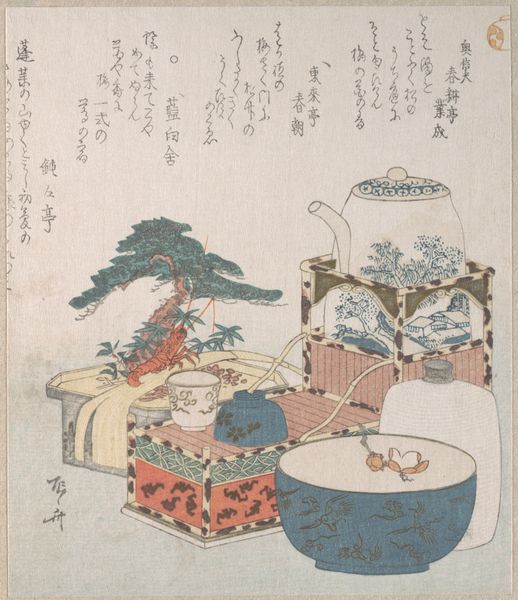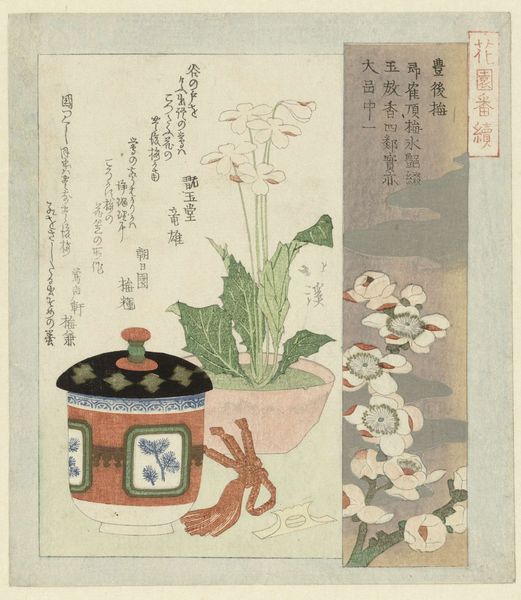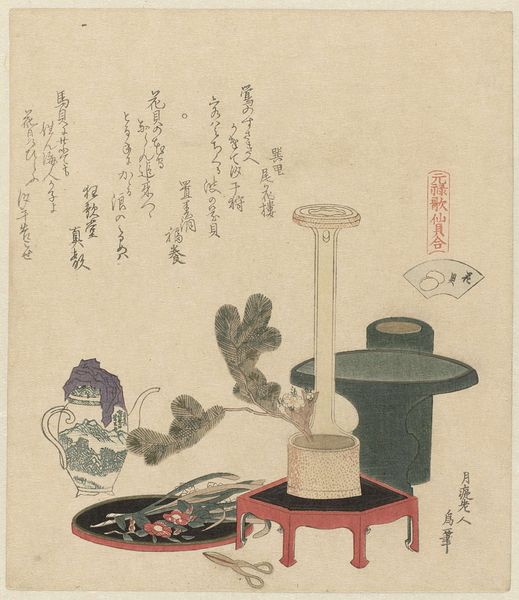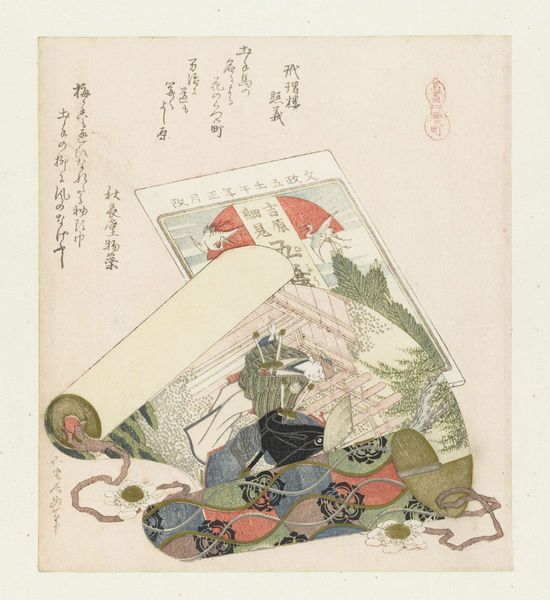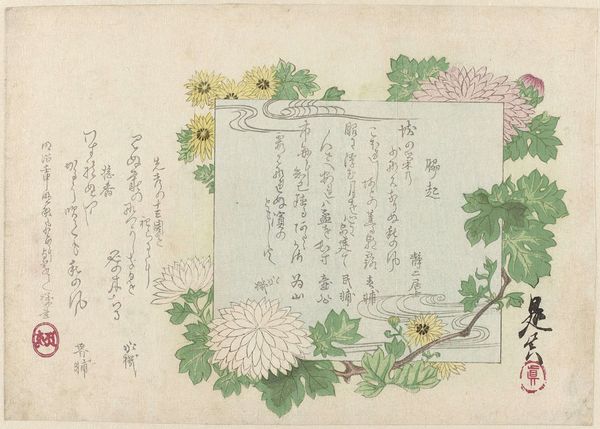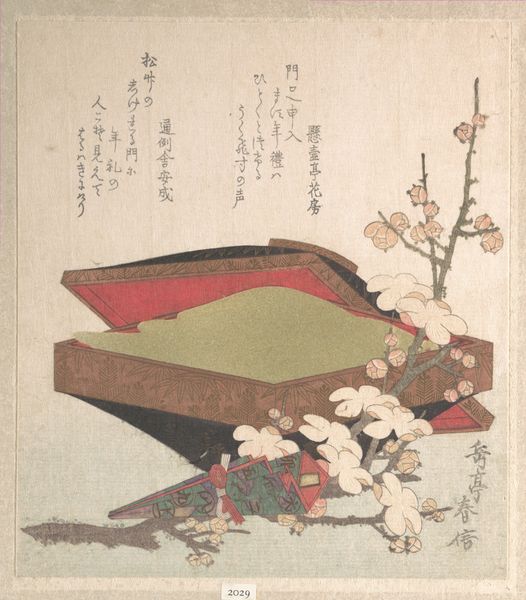
Dimensions: height 205 mm, width 184 mm
Copyright: Rijks Museum: Open Domain
Editor: So, this woodblock print is titled "Plum Blossom from Osaka," created by Totoya Hokkei in 1823. I'm really struck by its quiet, almost domestic feel. It's not the grand landscapes I often associate with ukiyo-e. How do you interpret this piece, particularly within the context of its time? Curator: That's an astute observation. Instead of focusing on grand vistas, Hokkei presents a cultivated still life, inviting us to consider the role of such prints within Edo society. Notice the calligraphy, and the overall carefully designed composition with plum blossoms— how do these details affect its purpose in the culture of early 19th century Japan? Editor: Well, the text seems important. It is juxtaposed directly next to the blossoms; this feels like a narrative piece celebrating the flower. How was art and literature integrated in Japan's urban culture at this time? Curator: The integration of text and image was absolutely central. Ukiyo-e prints weren’t just decorative, but disseminators of culture. Prints like this were often commissioned for specific occasions, perhaps celebrating the plum blossoms’ early blooming, a metaphor for renewal and prosperity. Given the textual context and the image itself, how does the display or context alter the reading? Editor: That makes a lot of sense. Knowing that the print probably served as a commissioned work for a patron alters my understanding. Displaying this within the context of contemporary consumer culture highlights the artist's patrons, and how taste is cultivated from top down. It makes me think about how the cultural elite directed the imagery for the middle classes. Curator: Exactly. Think about the commercial print industry and popular theatre influencing these artists and patrons too, thus impacting how these blossoms might also play on broader popular themes, beliefs, and stories about transience, seasons and renewal in Osaka culture. This type of visual artifact highlights class relations as taste is disseminated and appropriated within popular culture. Editor: It’s amazing how much social context is embedded within what initially seemed like just a pretty picture! I will think more carefully now about Ukiyo-e within a cultural framework. Curator: Indeed. Hokkei's print is a microcosm reflecting a world of social relations and artistic ambitions within early 19th century Japan. Looking closer reveals its cultural value and social functions.
Comments
No comments
Be the first to comment and join the conversation on the ultimate creative platform.
